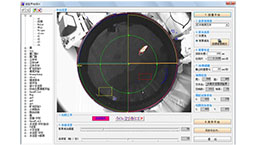Rabbit Model for Cardiopericarditis (CP)
Pericarditis
- Product No.DSI503Rb01
- Organism SpeciesOryctolagus cuniculus (Rabbit) Same name, Different species.
- Prototype SpeciesHuman
- SourceInduced by constrictive periearditis without thoracotomy
- Model Animal StrainsNew Zealand Rabbit, healthy, male and female, weight 1.5-2.0kg.
- Modeling GroupingRandomly divided into six group: Control group, Model group, Positive drug group and Test drug group(low,medium,high).
- Modeling Period4-6 weeks
- Modeling MethodUse New Zealand Rabbit with body weight of 1.5〜2.0kg. Fix the rabbit supine position, Intraperitoneous infusion with 2% procaine. Cut a small hole in the middle of the upper abdomen, take about 5% of the liver tissue to check the liver water content. Cut 2cm incision at the middle of chest, Close to the sternum and left side of the ribs to push the chest muscle to the sternum 1.5 cm, pull away the intercostal muscle incision at the upper and lower ribs to both sides, avoid the pleura, revealing the pericardium bare zone. With the 7th lumbar puncture needle in the xiphoid transition to the apical direction of the horizontal puncture, from the pericardial diaphragm into the pericardial cavity. Incubate the inducer by 1 ml/kg body weight, (inducer preparation: sterile talc 4g, tetracycline powder 1g, add 1.5% iodine tincture 20 ml, made of suspension). After 2 weeks, the animals are sacrificed. Immediately open chest to measure the left and right chest pleural effusion, Observe the pericardial thickening and assessment of pericardial thickening grade. Take two of the heart, pericardium specimens to do pathological examination. Open the abdominal cavity to measure ascites, take 2 liver tissue specimens, one forpathological examination, the other one for check the liver tissue water content.
- Applicationsn/a
- Downloadn/a
- UOM Each case
- FOB
US$ 500
For more details, please contact local distributors!
Model Evaluation
Pathological Results
Cytokines Level
Statistical Analysis
SPSS software is used for statistical analysis, measurement data to mean ± standard deviation (x ±s), using t test and single factor analysis of variance for group comparison, P<0.05 indicates there was a significant difference, P<0.01 indicates there are very significant differences.
GIVEAWAYS
INCREMENT SERVICES
-
 Tissue/Sections Customized Service
Tissue/Sections Customized Service
-
 Serums Customized Service
Serums Customized Service
-
 Immunohistochemistry (IHC) Experiment Service
Immunohistochemistry (IHC) Experiment Service
-
 Small Animal In Vivo Imaging Experiment Service
Small Animal In Vivo Imaging Experiment Service
-
 Small Animal Micro CT Imaging Experiment Service
Small Animal Micro CT Imaging Experiment Service
-
 Small Animal MRI Imaging Experiment Service
Small Animal MRI Imaging Experiment Service
-
 Small Animal Ultrasound Imaging Experiment Service
Small Animal Ultrasound Imaging Experiment Service
-
 Transmission Electron Microscopy (TEM) Experiment Service
Transmission Electron Microscopy (TEM) Experiment Service
-
 Scanning Electron Microscope (SEM) Experiment Service
Scanning Electron Microscope (SEM) Experiment Service
-
 Learning and Memory Behavioral Experiment Service
Learning and Memory Behavioral Experiment Service
-
 Anxiety and Depression Behavioral Experiment Service
Anxiety and Depression Behavioral Experiment Service
-
 Drug Addiction Behavioral Experiment Service
Drug Addiction Behavioral Experiment Service
-
 Pain Behavioral Experiment Service
Pain Behavioral Experiment Service
-
 Neuropsychiatric Disorder Behavioral Experiment Service
Neuropsychiatric Disorder Behavioral Experiment Service
-
 Fatigue Behavioral Experiment Service
Fatigue Behavioral Experiment Service
-
 Nitric Oxide Assay Kit (A012)
Nitric Oxide Assay Kit (A012)
-
 Nitric Oxide Assay Kit (A013-2)
Nitric Oxide Assay Kit (A013-2)
-
 Total Anti-Oxidative Capability Assay Kit(A015-2)
Total Anti-Oxidative Capability Assay Kit(A015-2)
-
 Total Anti-Oxidative Capability Assay Kit (A015-1)
Total Anti-Oxidative Capability Assay Kit (A015-1)
-
 Superoxide Dismutase Assay Kit
Superoxide Dismutase Assay Kit
-
 Fructose Assay Kit (A085)
Fructose Assay Kit (A085)
-
 Citric Acid Assay Kit (A128 )
Citric Acid Assay Kit (A128 )
-
 Catalase Assay Kit
Catalase Assay Kit
-
 Malondialdehyde Assay Kit
Malondialdehyde Assay Kit
-
 Glutathione S-Transferase Assay Kit
Glutathione S-Transferase Assay Kit
-
 Microscale Reduced Glutathione assay kit
Microscale Reduced Glutathione assay kit
-
 Glutathione Reductase Activity Coefficient Assay Kit
Glutathione Reductase Activity Coefficient Assay Kit
-
 Angiotensin Converting Enzyme Kit
Angiotensin Converting Enzyme Kit
-
 Glutathione Peroxidase (GSH-PX) Assay Kit
Glutathione Peroxidase (GSH-PX) Assay Kit
-
 Cloud-Clone Multiplex assay kits
Cloud-Clone Multiplex assay kits
| Catalog No. | Related products for research use of Oryctolagus cuniculus (Rabbit) Organism species | Applications (RESEARCH USE ONLY!) |
| DSI503Rb01 | Rabbit Model for Cardiopericarditis (CP) | n/a |
| DSI503Rb02 | Rabbit Model for Cardiopericarditis (CP) | n/a |





